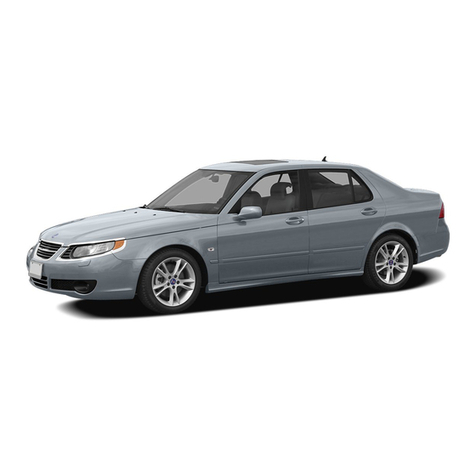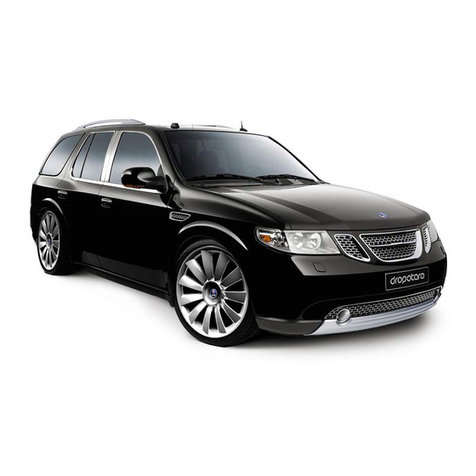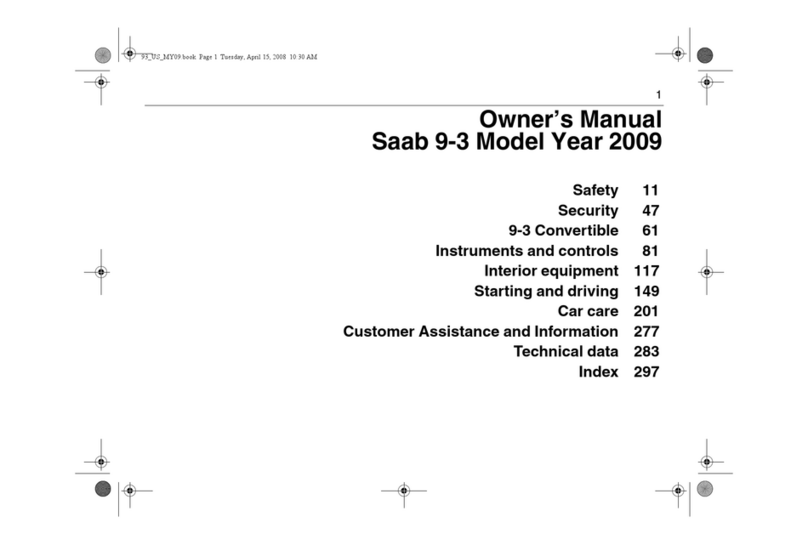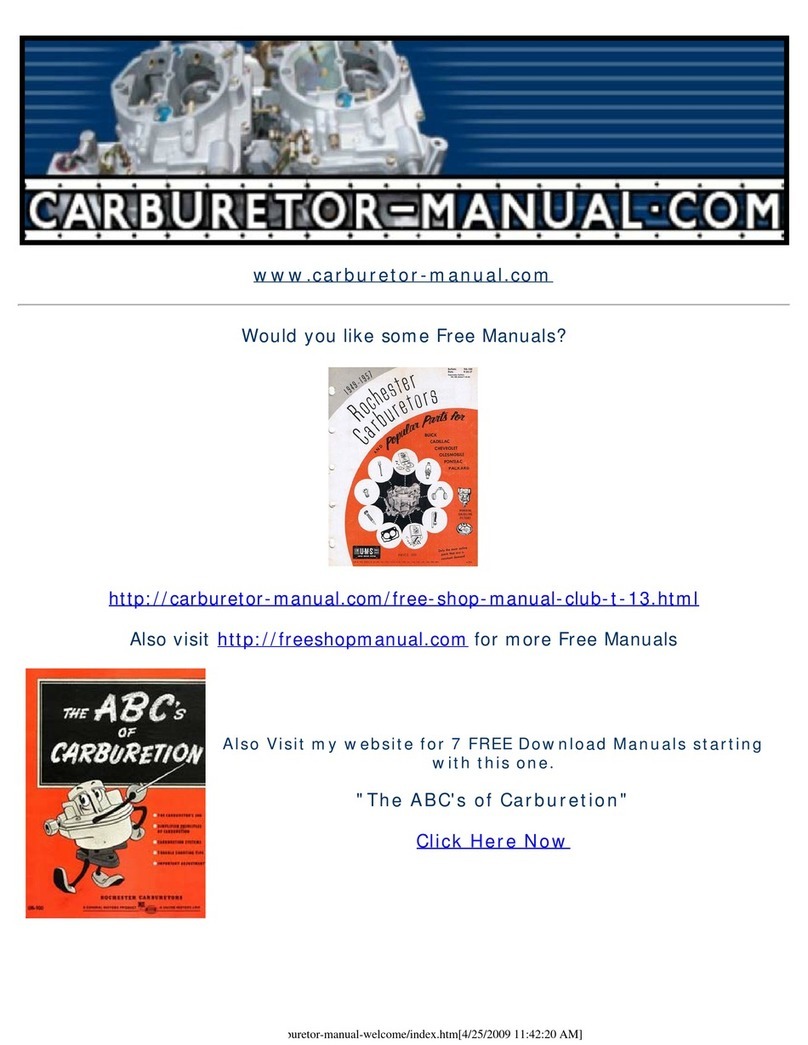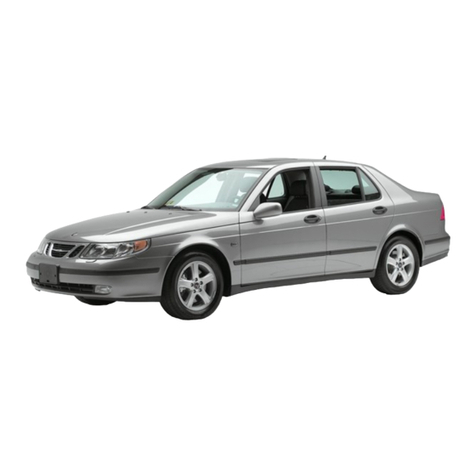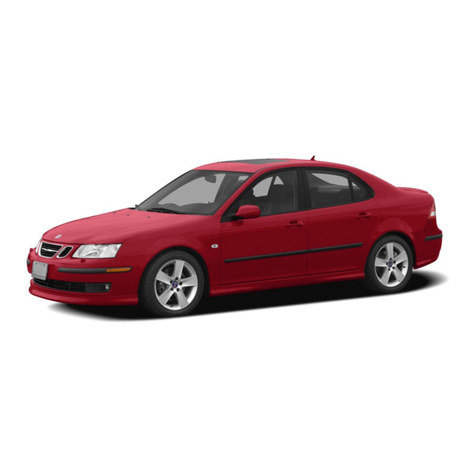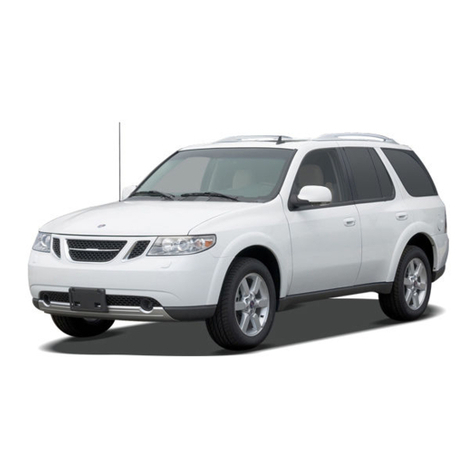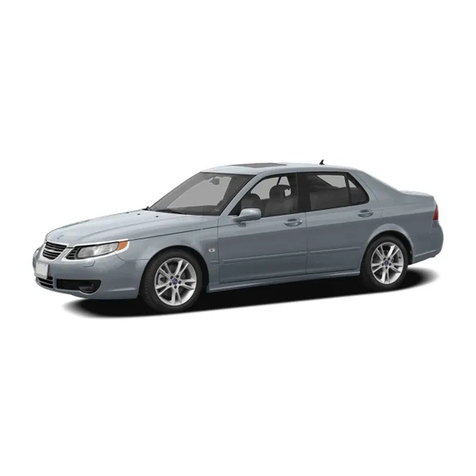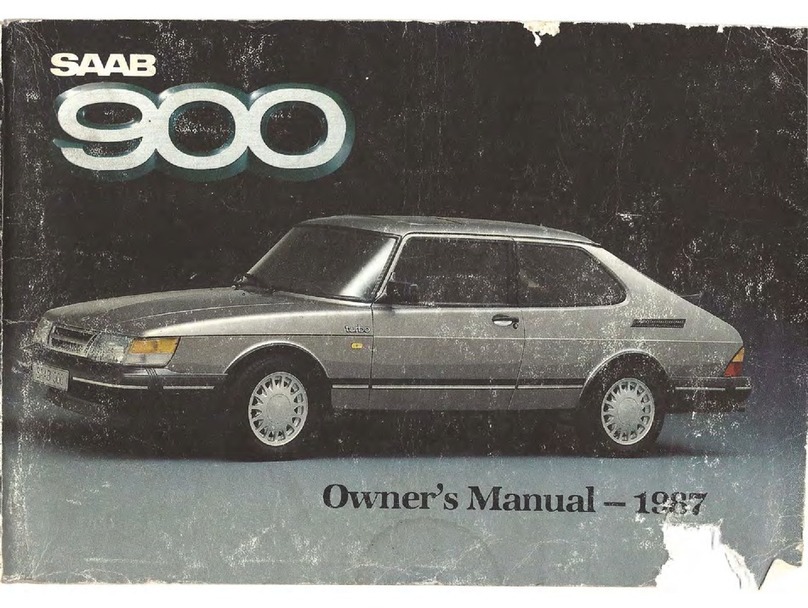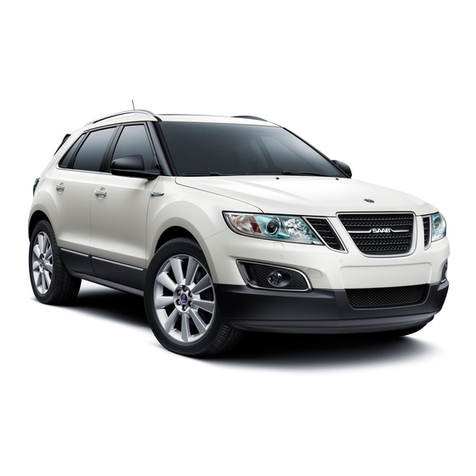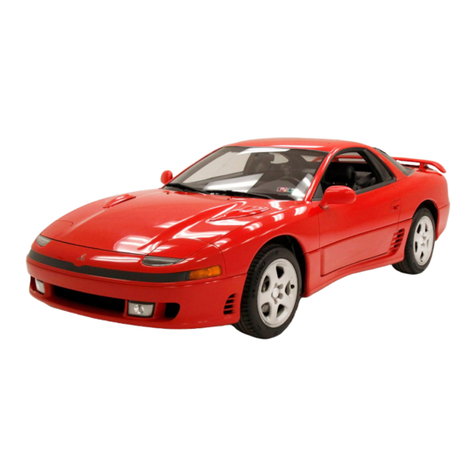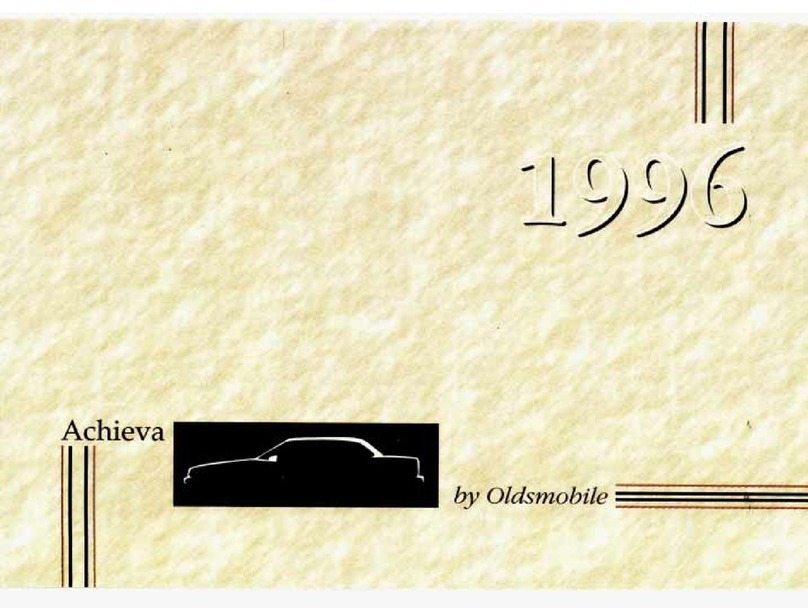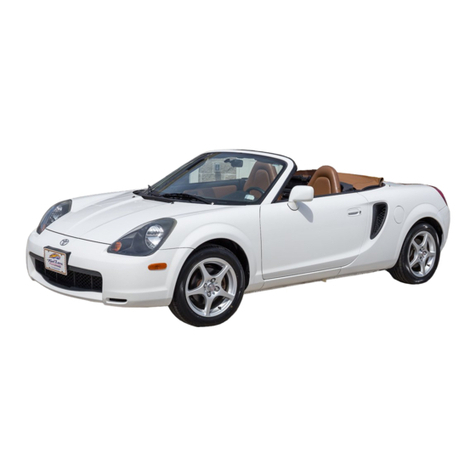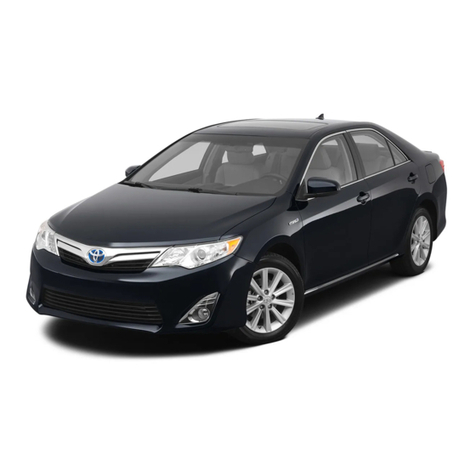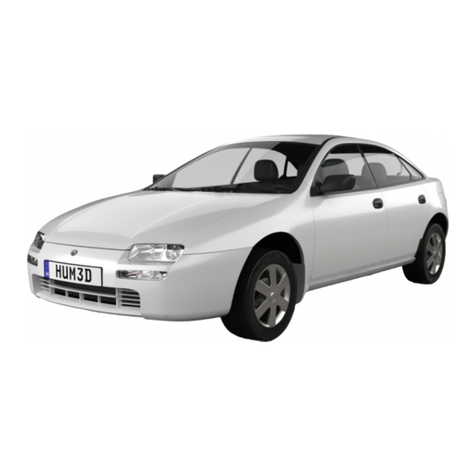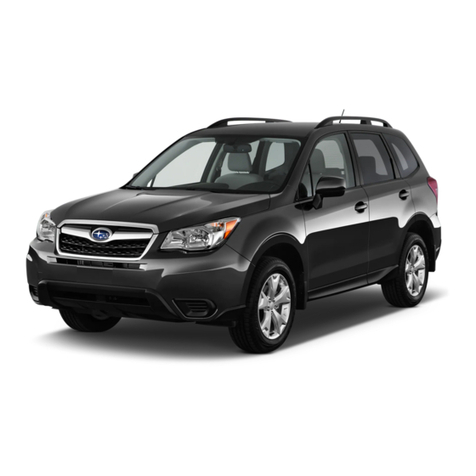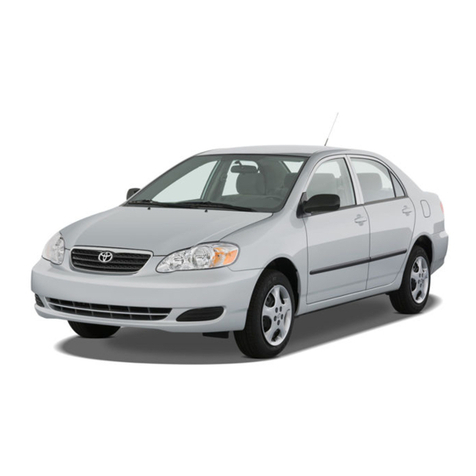
Engine
GENERAL
The
engine
is
a four-stroke, V4, water-cooled unit
of
the
overhead-valve
type..
The
crlinder_
bloc
is
a
one-pi~ce
casting with the cylinder bores
machined
duectly mto .t.
The
cast-uon crankshaft runs in three
main
bearings,
the.
middle
one
of
which
also
serves
as
an
axial
guide bearing.
The
connectmg
rods
are
shrunk onto the piston pins and
are
thus not
detachable
from
the pistons.
The
aluminium pistons
are
fitted with two
compression and
one
oil
control ring.
~e
three_bearing camshaft
is
driven
by the crankshaft
via
a gear
wheel
w1th
a ratio
of
2 :
1.
To ensure quiet running, the camshaft gear
wheel
is
made
of
fibre
.
~
balance shaft, to provide proper
engine
balance, is
located on the right hand
side
of the block and
is
also
driven
by the crank-
shaft
_Th~
balance
shaft runs
in
two bearings
and
is
driven
at
engine
speed.
The
d1str1butor
and
the
fuel
pump
are
driven
by acamshaft
skew
gear
and
an
eccentric, respectively.
The
cylinder heads for both banks
are
identical.
The
heads
have
separate
inlet ports
and
common exhaust ports for each bank
of
cylinders.
The
valves
operate in
guides
machined directly in the .cylinder head and there
are
thus no separate
valve
guides
and
valve
seats.
The
valves
are
operated
via
rock~rs,
push
~ods
and tappets from the camshaft, the tappets being
located m the cylinder block
and
actuated directly by the camshaft.
The
rocker
covers
are
ofpressed steel and the right hand
one
is
fitted
with
an
oil filler
cap
.
The
inlet manifold completely encloses the area
between the two cylinder
heads.
The
oil pump
is
of the
bi-ro
tor type.
The
pump
is
mounted in the
sump
on
~e
lower
face
ofthe cylinder block
and
is
driven
bya shaft from the
distnouto~
.
A
full-flow
oil ffiter
of
the disposable cannister type,
is
:'Crewed
duectly onto the right hand
side
of
the cylinder block. The filter
mcorporates
an
overflow
valve
to provide a safety factor in the event
of
the
filter becoming inoperative due tu dirt or
sludge
accumulation.
Engines
up to
and
including
engine
No.
16100 are equipped with a
semi
closed
crankcase ventilation system.
With
this system air
is
admitted into
the
crankcase
through the oil filler
cap
and
then led via a hose into the
car~urettor
intake at the air filter,
by-passing
the filter element. Late
eng~es
use
a
crankca_se
_ventilation system
?f
the totally enclosed type.
In
~
case
ffit~red
au
1s
drawn
from the
au
ffiter
via
a
flame
trap and
hose
mto the nght hand
rl>':ker
cover.
The
ventilation
flow
then
passes
through the crankcase and mto the left hand rocker cover where it
is
led
via
ahose to
an
intermediate
flange
beneath the
carburett~r
.
A regulating
valve
fitted at this point
governs
the
flow
of
air through the system.
ROUTINE
MAINTENANCE
Every
6.000
miles
(10,000
km)
the
engine
oil
should be changed and the
oil
filter replaced. Refer to the
TECHNICAL
DATA
at the end ofthis
~tion
for the
~t
of
recOffi!llended
lubricants.
The
sump
drain plug
is
Situated
on the right hand
Side
of the oil pan (8,
Fig.
A:2).
The
filter
is
ofthe disposable cannister type
md
should be removed using Tool.
No.
GC
6883 or other suitable strap wrench (Fig. A:6). Apply a ftlm
of
oil
to the rubber gasket on the
new
cartridge.
Screw
in
the cartridge until
the gasket makes contact with the
engine
block
and
then further tighten
halfa tum.
DO
NOT
overtighten the cartridge otherwise the rubber
seal
may
tilt in its
groove
and
leakage
will
result
THE
FOLLOWING
OPERATIONS
CAN
BE
PERFORMED
WITH
THE
ENGINE
IN
THE
CAR
:-
-
VALVE
CLEARANCES
-Measurement and Adjustment.
-
CYLINDER
HEAD
-Removal
and
Installation.
-
FRONT
COVER
-
Removal
and Installation.
-
FAN
BEARING
-Replacement.
-
CAMSHAFT
-
Removal
and
Installation.
VALVE
CLEARANCES
-Measurement and Adjustment :
To
ensure
qll:iet
and smooth running of the engine, the
valve
clearance
should
be
adjusted carefully and accurately with the engine
warm.
With
the
engine
at normal operating temperature,
remove
the airclemer.
Detach the spark plug leads
from
the rocker covers, unscrew the retaining
bolts and lift offboth the rocker covers.
The
cylinders
are
arranged with
No.
1
and
2 in the right hand bank and
Nos
. 3 and 4 in the left hand bank
No.
~cylinder
being at the .front
of
the car. Check the
valve
clearances
by'
r?tating the cranksltaft until the rocker
arms
at
one
cylinder "rock"
(1e.·
one
arm
will
be just starting to
move
whilst the other
will
be just
reaching the returned position). Both the
valves
at the cylinder in the
second column below can then be checked and,
if
necessary adjusted.
VALVES
ROCKING
VALVES
TO
ADJUST
(Cylinder No.) (Cylinder
No
.)
1 4
3 2
4 1
2 3
The
correct
valve
clearances are 0.016
in.
(0.40 mm) for both inlet
and
ex!'au~t
valves
with
the_
engine
warm.
To adjust the clearance,
screw
the
ad]ustmg
screw
clockwtse to decrease the clearance and
vice
versa
(Fig.
A:7).
Refit the rocker covers and the air cleaner. The rocker cover with the oil
filler cap must
always
be installed on the right hand
side
of
the
engine.
If
a
roc.ker
cover gasket
is
damaged, discard the old gasket, fit the
new
gasket m the rocker cover and
press
the gasket tabs into the locating slots
in the cover (Fig. A:8).
CYLINDER
HEAD
-Removal and Installation :
Remove
the air cleaner and inlet manifold
as
described in the FUEL
SY~~EM
section. Disconnect the alternator cables, noting their respective
p~s1tions.
Release the alternator adjusting and mounting bolts,
remove
the
drive
belt and detaclt the alternator and mounting bracket.
Disconnect the
engine
sire
support from the bracket on the left hand
side
ofthe engine (9, Fig.
A:
1). Detach the pre-heater plate (8,
Fig.
A:
1).
Unscrew
the
flange
nuts securing the exhaust pipes to the cylinder heads.
Unbolt the exhaust pipe clamps at the engine mountingbrackets and
remove
the spacers at the cylinder heads.
Release. evenly, the two bolts securing the rocker shaft pillars to the
cy!inderhead! lift off the rocker assembly and
remove
the oil return plate
(F1g.
A:9). Lift out the push rods, keeping them in their correct order.
This can
be
acheived by pushing the rods through a piece ofcard with
"LEFT BANK· FRONT" or "RIGHT BANK· FRONT'' marked at the
appropriate end. Release the cylinder head bolts evenly, in the
reverse
order to that shown in
Fig.
A:
11
and lift offthe cylinder head
assembly
and gasket.
~e_peat
for
th~
other cylinder head. Note that the outer rear
bolt on the right hand cylinder head also secures the
engine
earth cable.
Before installing the cylinder heads, ensure that the mating faces
of
the
cylinder block and heads are clean and
free
from old gasket material.
~e
cylinder head gaskets for the right hand and lefthand banks are
different and
are
not interchangeable (Fig.
A:
10). The gaskets are marked
"FRONT" and "TOP". Place one
of
the cylinder head gaskets over the
two locating dowels on its respective face
of
the cylinder block. Install the
cylinder head on the locating
sleeves.
Repeat for the other cylinder head
and
gasket Note that the outer rear bolt
of
the right hand cylinder head
also
secures the
engine
earth cable. Tighten the cylinder head bolts in
three stages following the sequence shown in Fig. A:
11
.
STAGE
1 40 lbft. (5.5
kgm}
STAGE
2 50 lbft. (7.0
kgm
STAGE
3 68lbft. (9.5
kgm
Dip
the push rods ends in engine oil and install the push rods in their
original bores. Fit the oil return plate and rocker shaft
assembly
to each
cylinder head, locating the adjusting screw in the cupped end
of
the push
r?ds. Secure each
~ocker
shaft assembly with the two retaining bolts and
tighten evenly. Adjust the
valve
clearances
as
described previously.
Install the inlet manifold, carburettor and
air
cleaner
as
detailed in the
FUEL
SYSTEM
section under "INLET
MANIFOLD
•Removal and
Installation".
3
